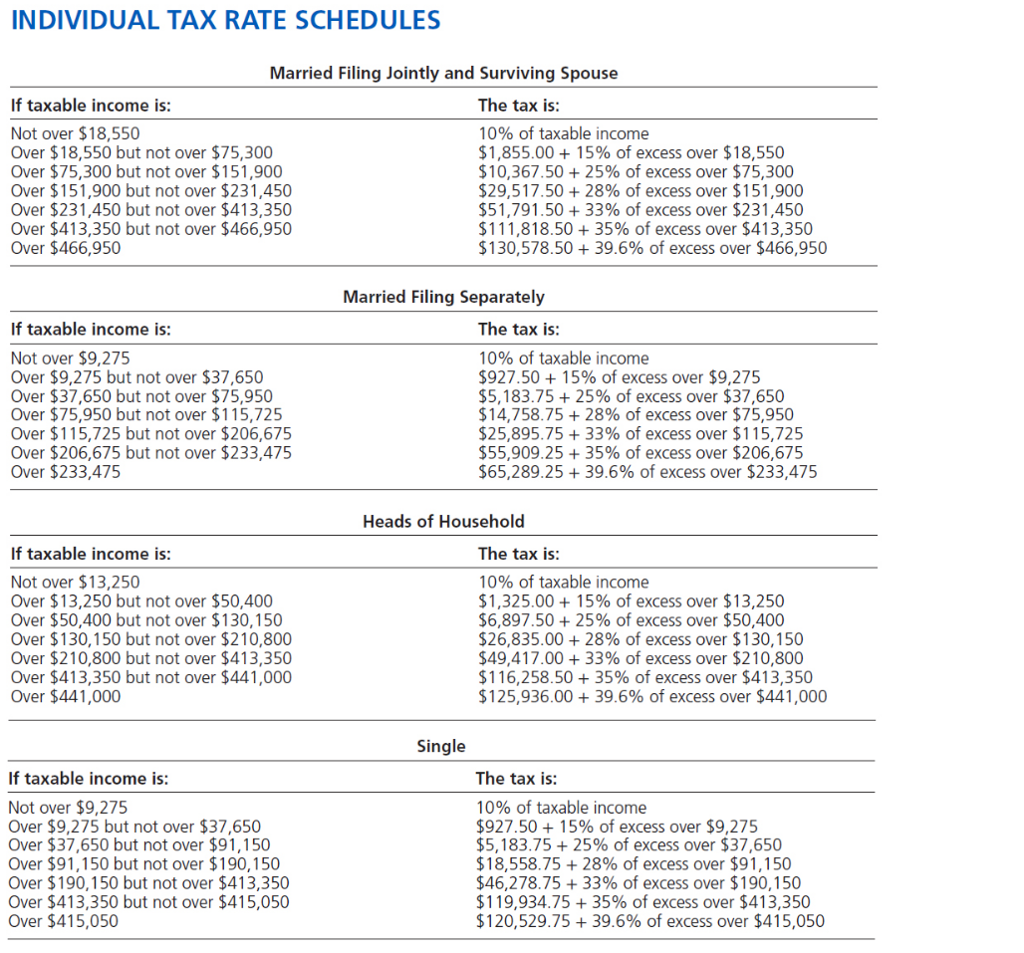Answered step by step
Verified Expert Solution
Question
1 Approved Answer
Ms. T. an unmarried individual, has the following income items: Schedule C net profit $ 31,900 NOL carryforward deduction (9,190 ) Interest income 725 Ms.
Ms. T. an unmarried individual, has the following income items:
| Schedule C net profit | $ | 31,900 | |
| NOL carryforward deduction | (9,190 | ) | |
| Interest income | 725 | ||
Ms. Ts self-employment tax was $4,507. She had $6,270 itemized deduction and one dependent child (age 9) who lives in her home. Compute Ms. Ts income tax. Use Individual Tax Rate Schedules and Standard Deduction Table. (Round your intermediate calculations and final answers to the nearest whole dollar amount.)
|


Step by Step Solution
There are 3 Steps involved in it
Step: 1

Get Instant Access to Expert-Tailored Solutions
See step-by-step solutions with expert insights and AI powered tools for academic success
Step: 2

Step: 3

Ace Your Homework with AI
Get the answers you need in no time with our AI-driven, step-by-step assistance
Get Started


